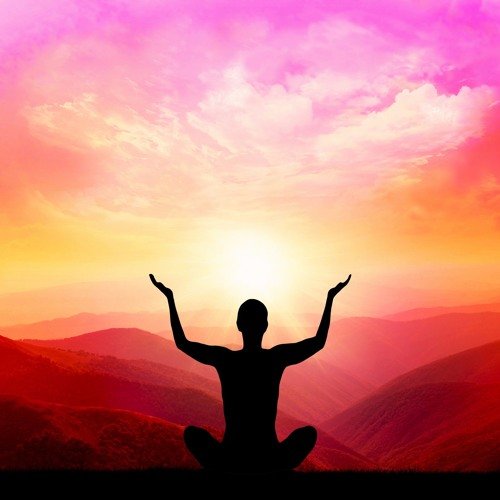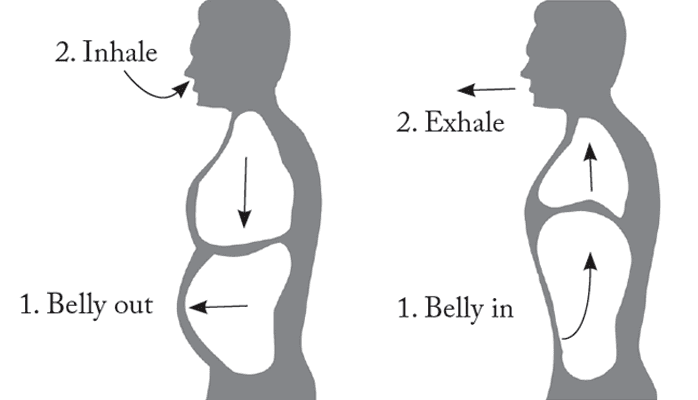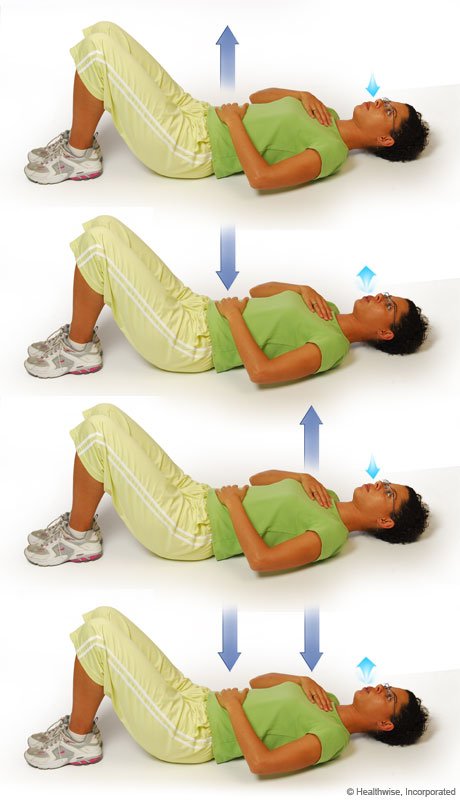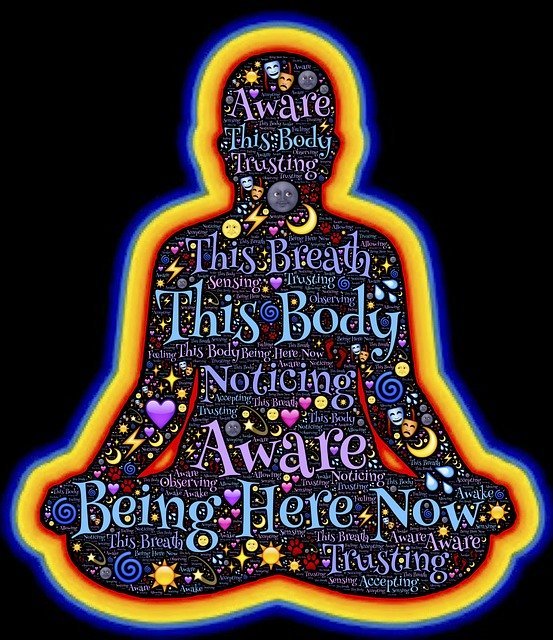Breath The LiFe Till 100 Years

Natural painkiller
When you deep breathe, the body releases endorphins, which are the feel-good hormones and a natural pain killer created by the body itself.
Improves blood flow
When we take deep breaths, the upward and downward movement of the diaphragm helps remove the toxins from the body promoting better blood flow.
Increases energy level
Due to increased blood flow, we get more oxygen into our blood. Increased oxygen results in increased energy levels.
Improves posture
Believe it or not, bad posture is related to incorrect breathing. If you don’t believe, try it yourself. Try to breathe deeply and notice how your body starts to straighten up during the process. When you fill your lungs with air, this automatically encourages you to straighten up your spine.
Reduces inflammation
A lot is said that diseases like cancer only thrive in bodies that are acidic in nature. Deep breathing is said to reduce the acidity in your body, thereby making it alkaline. Stress also increases the acidity level in the body. Breathing also reduces stress and thus the acidity.
It detoxifies the body

Carbon dioxide is a natural toxic waste that comes out from our body only through breathing. But when our lungs are compromised by shallow breathing the other detoxification system starts working harder to expel this waste. This can make our body weaker and lead to illness.
Stimulates lymphatic system
As our breathing is what moves the lymph, shallow breathing can lead to a sluggish lymphatic system which will not detoxify properly. Deep breathing will help you get the lymph flowing properly so that your body can work more efficiently.
Provides Oxygen & Circulates Blood Flow
Breathing deep supplies more oxygen to all our body parts including our digestive system, thus making it work more efficiently. The increased blood flow due to deep breathing also encourages intestinal action which further improves your overall digestion. In addition, deep breathing results in a calmer nervous system, which in turn also enhances optimal digestion.
Breathing relaxes Mind & Body
When you are angry, tensed or scared, your muscles are tightened and your breathing becomes shallow. Your breathing constricts. At this time your body is not getting the amount of oxygen it requires. Long deep breathing reverses this process, allowing your body (and mind) to become calmer.
Deep breathing is one of the best ways to lower stress in the body. This is because when you breathe deeply, it sends a message to your brain to calm down and relax. The brain then sends this message to your body. Those things that happen when you are stressed, such as increased heart rate, fast breathing, and high blood pressure, all decrease as you breathe deeply to relax.
- The way you breathe affects your whole body. Breathing exercises are a good way to relax, reduce tension, and relieve stress.
- Breathing exercises are easy to learn. You can do them whenever you want, and you don’t need any special tools or equipment to do them.
- You can do different exercises to see which work best for you.
How do you do breathing exercises?
There are lots of breathing exercises you can do to help relax. The first exercise below—belly breathing—is simple to learn and easy to do. It’s best to start there if you have never done breathing exercises before. The other exercises are more advanced. All of these exercises can help you relax and relieve stress.
Belly breathing

Belly breathing is easy to do and very relaxing. Try this basic exercise anytime you need to relax or relieve stress.
- Sit or lie flat in a comfortable position.
- Put one hand on your belly just below your ribs and the other hand on your chest.
- Take a deep breath in through your nose, and let your belly push your hand out. Your chest should not move.
- Breathe out through pursed lips as if you were whistling. Feel the hand on your belly go in, and use it to push all the air out.
- Do this breathing 3 to 10 times. Take your time with each breath.
- Notice how you feel at the end of the exercise.
Next steps
After you have mastered belly breathing, you may want to try one of these more advanced breathing exercises. Try all three, and see which one works best for you:
- 4-7-8 breathing
- Roll breathing
- Morning breathing
4-7-8 breathing
This exercise also uses belly breathing to help you relax. You can do this exercise either sitting or lying down.
- To start, put one hand on your belly and the other on your chest as in the belly breathing exercise.
- Take a deep, slow breath from your belly, and silently count to 4 as you breathe in.
- Hold your breath, and silently count from 1 to 7.
- Breathe out completely as you silently count from 1 to 8. Try to get all the air out of your lungs by the time you count to 8.
- Repeat 3 to 7 times or until you feel calm.
- Notice how you feel at the end of the exercise.
Roll breathing

Roll breathing helps you to develop full use of your lungs and to focus on the rhythm of your breathing. You can do it in any position. But while you are learning, it is best to lie on your back with your knees bent.
- Put your left hand on your belly and your right hand on your chest. Notice how your hands move as you breathe in and out.
- Practice filling your lower lungs by breathing so that your “belly” (left) hand goes up when you inhale and your “chest” (right) hand remains still. Always breathe in through your nose and breathe out through your mouth. Do this 8 to 10 times.
- When you have filled and emptied your lower lungs 8 to 10 times, add the second step to your breathing: inhale first into your lower lungs as before, and then continue inhaling into your upper chest. Breathe slowly and regularly. As you do so, your right hand will rise and your left hand will fall a little as your belly falls.
- As you exhale slowly through your mouth, make a quiet, whooshing sound as first your left hand and then your right-hand fall. As you exhale, feel the tension leaving your body as you become more and more relaxed.
- Practice breathing in and out in this way for 3 to 5 minutes. Notice that the movement of your belly and chest rises and falls like the motion of rolling waves.
- Notice how you feel at the end of the exercise.
Practice roll breathing daily for several weeks until you can do it almost anywhere. You can use it as an instant relaxation tool anytime you need one.
Caution: Some people get dizzy the first few times they try roll breathing. If you begin to breathe too fast or feel lightheaded, slow your breathing. Get up slowly.
Morning breathing
Try this exercise when you first get up in the morning to relieve muscle stiffness and clear clogged breathing passages. Then use it throughout the day to relieve back tension.
- From a standing position, bend forward from the waist with your knees slightly bent, letting your arms dangle close to the floor.
- As you inhale slowly and deeply, return to a standing position by rolling up slowing, lifting your head last.
- Hold your breath for just a few seconds in this standing position.
- Exhale slowly as you return to the original position, bending forward from the waist.
- Notice how you feel at the end of the exercise.
Breathing a big word, common for everyone. The alternate is “oxygen” or “Pran Vayu”.
Each and every human being, animals, birds, creatures or all living things on earth can breathe. We breathe oxygen and release carbon. We need to grow more trees for a better level of oxygen in the environment.
There are different types of breathings generally we breathe normally. while proper breathing exercise will help to consume more oxygen to the lungs.
Different types of Pranayam

There are Pranayam like
Shukshna Pranayam, widening of thought etc..
A different technique of breathing.
Pranayam, the process of bringing in prana energy into physical apparatus to maintain perfect health. The human body is like a mechanical instrument and prana or energy is like a powerhouse of this machine. countless cells, all organs, systems, bloodstream. All body parts are generated with prana (oxygen). which comes to the body only through breathing.
As we know our body has a circulatory system, blood purifies the impurities present in the body and help to reduce free radicals in the body. If a man does not get enough air and oxygen to cope with the bulk of blood to be purified for circulation in the body. He can not walk fast, cannot run, cannot do proper routine activities because the lungs refuse to expand beyond the reduce hardened walls.
The result of insufficient breathing can be bad and dangerous. Oxygen is necessary for the metabolism of cells. Particularly brain and heart cells require an abandoned supply of oxygen. our kidney, liver, lungs continuously work off removing impurities or toxins from the body. This work also require oxygen but due to lack of breathing oxygen availability, these organs are also affected. Burden increases on this organ system. and day by day body gets drained, dehydrated, dull mimic metabolic rate goes down, the immune system damaged. The body becomes the house of disease.
There are many chronic diseases or incurable diseases shows miraculous improvement with the help of Pranayam and meditation ( control of breathing or extension of breath)
B.P, DIABETES, CANCER, ASTHMA, SKIN PROBLEM, DISGESTIVE DISORDER, MENTAL STRESS, depression, insomnia, hormonal disorders etc…. can be treated with the help of proper breathing exercise under the guidance of expert


